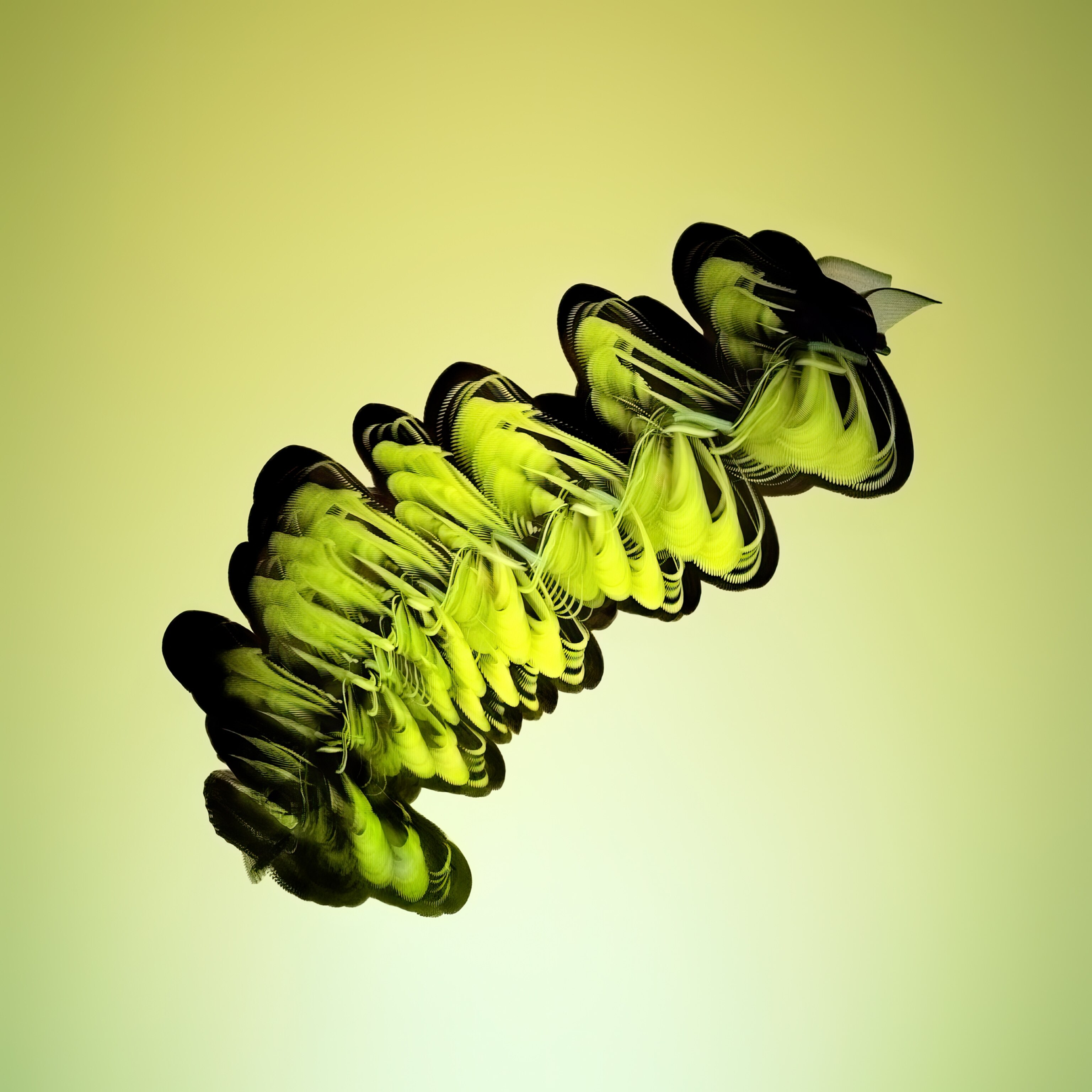
These photos are works of art—and the artists are bugs
A photographer’s innovative technique reveals the flight paths of insects in exquisitely alluring ways.
Movements of flying insects make them tough to track, but technological advances and some creative thinking have allowed Spanish photographer Xavi Bou to do just that. After spending 10 years concentrating on birds in flight for his Ornithographies project, he shifted his focus to bugs.
For Entomographies, he uses high-speed video footage taken by Adrian Smith, an entomologist at North Carolina State University, to decode and document insect trajectories. Then Bou selects multiple frames and merges them into single images that convey the rapid motions through space and time of one or more animals.
With Smith’s help, Bou has mapped the aerial acrobatics of wasps, the leaps of leafhoppers, and the flutters of butterflies in stunning detail. In doing so, he hopes to raise awareness about the decline of key insect populations worldwide. “It’s happening in front of our eyes, and we are not paying attention,” Bou says.
(‘Every day is survival’: See the extraordinary lives of ordinary bugs.)
Zebra longwing
This butterfly, found in many parts of the Americas, lives up to its name. The insect can soar to great heights with just a few beats of its supersize wings.

Two-lined spittlebug
This insect, native to the eastern United States, is often called a pest because of its taste for turf. Spring-loaded hind legs can launch the animal into the air like a rocket.

Yellow-collared scape moth
Unlike most moths, this North American species can be seen flying during the day, with its iridescent blue-black wings that shimmer in sunlight.

Ailanthus webworm moths
These tropical moths have moved farther north in the U.S. Thanks to their larval host, the invasive tree of heaven, they are among the most widespread backyard moths in the country.

Common stonefly
Found mainly in eastern North America, this insect spends time as an underwater nymph, often in forested streams or rivers. Then it emerges from its aquatic environment, molts into an adult, and gains its wings.
(See the microscopic universe that lives in a single drop of water.)

Green lacewings
Eighty-seven species of this insect have been recorded in the U.S. and Canada. Because they have hearty appetites for unwanted plant visitors such as aphids and mites, they’re often used for biological control of pests.

Grapevine beetle
This insect, with an apt name, feeds on the leaves and fruit of grapevines, both wild and cultivated, but it does little harm to the plants. A type of scarab beetle, it often flies in a curved path.

Oak treehopper and green treehopper
Treehoppers are known for their distinctively shaped pronotum, the area behind the head, that often mimics parts of plants to provide camouflage from predators. Specialized muscles provide their jumping ability.

Banded orange
This strikingly colored butterfly has a range that stretches from Mexico to Brazil. Before the mating season begins, males seek mineral salts, sometimes even drinking briny secretions from the skin, eyes, and nostrils of other animals.

Sapho longwing
Longwings can live for six to seven months, a longer life span than most butterflies. This variety, ranging from Mexico to Ecuador, has lustrous blue on its wings, which inspired another of its common names: Sapphire longwing.

(This is what plants look like—from the inside out.)
You May Also Like
Go Further
Animals
- How can we protect grizzlies from their biggest threat—trains?How can we protect grizzlies from their biggest threat—trains?
- This ‘saber-toothed’ salmon wasn’t quite what we thoughtThis ‘saber-toothed’ salmon wasn’t quite what we thought
- Why this rhino-zebra friendship makes perfect senseWhy this rhino-zebra friendship makes perfect sense
- When did bioluminescence evolve? It’s older than we thought.When did bioluminescence evolve? It’s older than we thought.
- Soy, skim … spider. Are any of these technically milk?Soy, skim … spider. Are any of these technically milk?
Environment
- Are the Great Lakes the key to solving America’s emissions conundrum?Are the Great Lakes the key to solving America’s emissions conundrum?
- The world’s historic sites face climate change. Can Petra lead the way?The world’s historic sites face climate change. Can Petra lead the way?
- This pristine piece of the Amazon shows nature’s resilienceThis pristine piece of the Amazon shows nature’s resilience
- Listen to 30 years of climate change transformed into haunting musicListen to 30 years of climate change transformed into haunting music
History & Culture
- Meet the original members of the tortured poets departmentMeet the original members of the tortured poets department
- Séances at the White House? Why these first ladies turned to the occultSéances at the White House? Why these first ladies turned to the occult
- Gambling is everywhere now. When is that a problem?Gambling is everywhere now. When is that a problem?
- Beauty is pain—at least it was in 17th-century SpainBeauty is pain—at least it was in 17th-century Spain
Science
- Here's how astronomers found one of the rarest phenomenons in spaceHere's how astronomers found one of the rarest phenomenons in space
- Not an extrovert or introvert? There’s a word for that.Not an extrovert or introvert? There’s a word for that.
- NASA has a plan to clean up space junk—but is going green enough?NASA has a plan to clean up space junk—but is going green enough?
- Soy, skim … spider. Are any of these technically milk?Soy, skim … spider. Are any of these technically milk?
Travel
- This tomb diver was among the first to swim beneath a pyraamidThis tomb diver was among the first to swim beneath a pyraamid
- Dina Macki on Omani cuisine and Zanzibari flavoursDina Macki on Omani cuisine and Zanzibari flavours
- How to see Mexico's Baja California beyond the beachesHow to see Mexico's Baja California beyond the beaches
- Could Mexico's Chepe Express be the ultimate slow rail adventure?Could Mexico's Chepe Express be the ultimate slow rail adventure?




